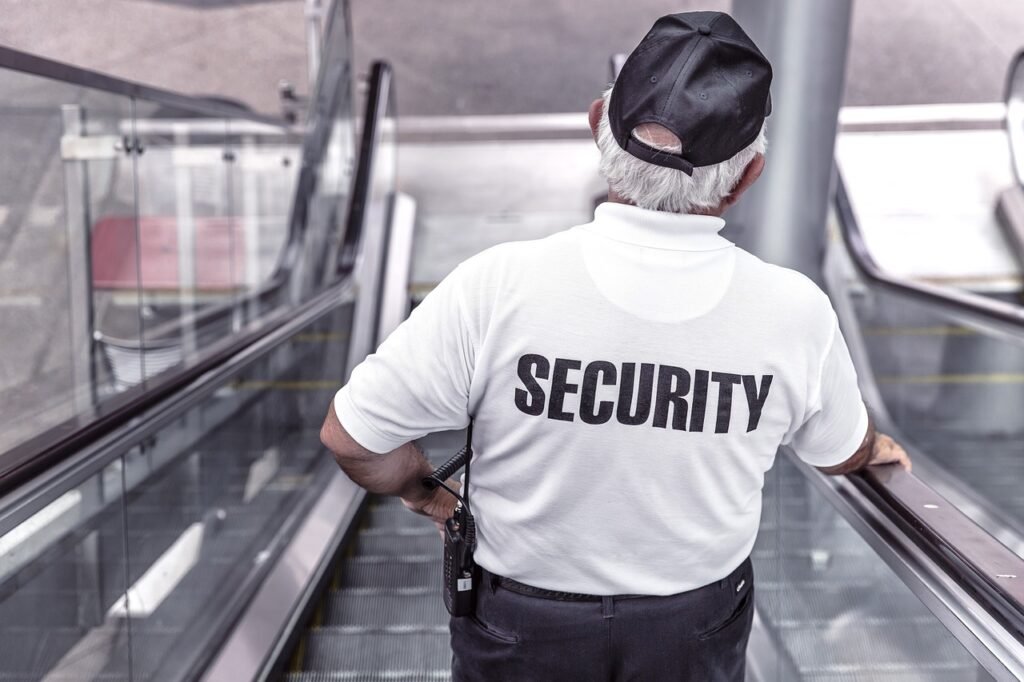Are you in the market for a wall safe but feeling overwhelmed by the vast array of options available? Look no further! This comprehensive guide will provide you with all the essential information you need to confidently assess the security features of wall safes. From fire and water resistance to electronic locking systems, we will cover it all, ensuring that you make an informed decision and find the perfect wall safe to protect your valuable possessions. So, let’s dive into the world of wall safes and discover the key factors to consider when choosing the ideal security solution for your needs.

This image is property of pixabay.com.
Types of Wall Safes
Concealed Wall Safes
Concealed wall safes are designed to be hidden behind a painting, mirror, or other wall-mounted fixture, making them an excellent choice for those who prioritize stealth and discretion. These safes are typically installed during the construction or remodeling of a building, ensuring that they blend seamlessly into the surrounding wall and remain undetectable to potential intruders.
Fireproof Wall Safes
Fireproof wall safes are specially constructed to protect your valuables from the devastating effects of fire. These safes are equipped with fire-resistant insulation materials and are designed to maintain a low internal temperature during a fire, allowing your belongings to survive the flames unscathed. When selecting a fireproof wall safe, be sure to consider the UL fire resistance ratings and temperature rating to ensure the level of protection you need.
Biometric Wall Safes
Biometric wall safes offer cutting-edge security technology that allows you to access your safe using your unique biological features, such as fingerprints or retinal scans. This eliminates the need for traditional keys or combinations, reducing the risk of unauthorized access. Biometric wall safes are not only convenient but also highly secure, as they rely on your specific biometric data, making it extremely difficult for intruders to replicate.
Electronic Wall Safes
Electronic wall safes are equipped with an electronic keypad that allows you to unlock the safe using a predetermined combination. These safes offer convenience and quick access to your belongings, eliminating the hassle of searching for keys or remembering combinations. Some electronic wall safes also include additional security features, such as a timed lockout function after multiple failed attempts, further enhancing their security.
Mechanical Combination Wall Safes
Mechanical combination wall safes feature a traditional dial or wheel mechanism that requires you to input a specific numerical combination to unlock the safe. These safes have a classic charm and are highly reliable as they do not rely on batteries or electronics. However, it is crucial to ensure that your combination is unique, well-memorized, and known only to you and trusted individuals to maintain optimal security.
Locking Mechanisms
Key Locks
Key locks are the most basic and straightforward locking mechanism for wall safes. They require a physical key to unlock and access the safe. While key locks are simple to use, they can be vulnerable to key duplication or loss. It is essential to keep your safe key secure, and avoid hiding it in obvious places to maintain the security of your valuables.
Biometric Locks
Biometric locks employ advanced biometric technology to allow access to your wall safe. By scanning your fingerprint or retina, the lock verifies your identity and grants you entry. Biometric locks offer an additional layer of security as they rely on unique biological features that are difficult to replicate. However, it is necessary to ensure that the biometric lock is of high quality and has robust anti-spoofing measures to prevent unauthorized access attempts.
Combination Locks
Combination locks require you to input a specific sequence of numbers or letters to unlock the safe. These locks can be either mechanical or electronic, depending on the model. Combination locks provide a secure and reliable option, as they do not require physical keys that can be lost or duplicated. It is crucial to choose a combination that is challenging to guess and keep it confidential to maximize security.
Electronic Keypad Locks
Electronic keypad locks feature a digital keypad that allows you to input a pin or password to unlock the safe. These locks offer convenience and quick access, as you do not need to carry physical keys. Electronic keypad locks often include additional security features such as timed lockouts, allowing temporary lockouts after multiple incorrect attempts. It is essential to choose a strong and unique password and regularly update it to maintain optimal security.
Dual Locking Systems
Dual locking systems combine two different locking mechanisms to enhance security. For example, a wall safe can have both a key lock and a combination lock, requiring both the key and the correct sequence of numbers or letters to open the safe. Dual locking systems provide a higher level of security by incorporating multiple layers of protection. However, it is essential to ensure that both locking mechanisms are of high quality and properly maintained to avoid vulnerabilities.

This image is property of pixabay.com.
Wall Thickness and Construction
Solid Steel Construction
Wall safes with solid steel construction offer superior strength and durability. The thickness of the steel used in the safe’s construction plays a vital role in determining its resistance to forced entry. Thicker steel provides better protection against drilling, prying, and other physical attacks. When selecting a wall safe, consider the gauge or thickness of the steel to ensure you choose a safe that meets your security needs.
Bolt Thickness
Bolts are an essential component of a wall safe’s security. Thicker and longer bolts provide greater resistance to forced entry, as they anchor the safe firmly to the wall. Look for wall safes with substantial bolt thickness, preferably with multiple bolts, as they make it significantly more difficult for intruders to pry or remove the safe from the wall.
Reinforced Walls
Reinforced walls are designed to withstand attacks and forced entry attempts. Wall safes with reinforced walls have additional layers of steel or other materials to increase their resistance to drilling, cutting, or battering. When evaluating the security of a wall safe, verify if it has reinforced walls to ensure it can withstand various break-in techniques.
Drill Resistance
Drill resistance is an essential feature to consider when assessing the security of a wall safe. Safes with drill-resistant properties utilize hardened steel plates or anti-drill materials to deter and slow down drilling attempts. These additional security measures are crucial in preventing intruders from gaining access to the safe by drilling through its walls or lock mechanisms.
Fire Resistance
UL Fire Resistance Ratings
When choosing a fireproof wall safe, it is important to consider its UL (Underwriters Laboratories) fire resistance rating. These ratings determine the length of time the safe can withstand exposure to fire and the maximum temperature it can reach inside while protecting its contents. Look for safes with higher UL fire resistance ratings to ensure optimal protection for your valuable possessions.
Fireproof Insulation
Fireproof wall safes feature specialized insulation materials that provide a barrier against heat and flames. These insulating materials are designed to slow down the transfer of heat to the interior of the safe, protecting your belongings from fire damage. Insulation types such as gypsum board, ceramic wool, or vermiculite are commonly used in fireproof safes. When assessing the fire resistance of a wall safe, consider the quality and thickness of the insulation to ensure maximum protection.
Smoke Seals
Smoke seals are an important feature in fireproof wall safes as they prevent smoke and other harmful gases from seeping into the safe. When exposed to fire, a safe with effective smoke seals will help maintain air quality inside the safe, preventing damage to sensitive items like documents or electronic devices. It is crucial to verify that the wall safe comes with quality smoke seals to ensure comprehensive fire protection.
Temperature Rating
The temperature rating of a fireproof wall safe indicates the maximum temperature it can endure without allowing the interior to exceed a certain temperature. This rating is usually expressed in degrees Fahrenheit or Celsius. When selecting a fireproof wall safe, consider the temperature rating, ensuring that it aligns with the type of fire hazards commonly present in your location. A higher temperature rating will provide increased protection against intense fires.

This image is property of pixabay.com.
Tamper-Proof Features
Anti-Tamper Sensors
Wall safes equipped with anti-tamper sensors can detect and alert you to any tampering attempts. These sensors may include vibration sensors, motion detectors, or even advanced technologies like seismic sensors. When triggered, these sensors can activate audible alarms or send silent notifications to your security system, providing an additional layer of protection against burglary attempts.
Anti-Drill Plates
Anti-drill plates are additional layers of hardened steel or other drill-resistant materials installed in strategic locations within the wall safe. These plates make it difficult for intruders to drill through the safe walls and gain access to its contents. Safes with anti-drill plates significantly increase their resistance to drilling attacks, deterring potential burglars.
Re-locking Mechanisms
Re-locking mechanisms are security features that automatically engage when a wall safe detects a forced entry attempt, such as drilling or excessive pressure on the lock. Once triggered, re-locking mechanisms lock critical components of the safe, preventing further access and increasing the difficulty for intruders to open the safe. Re-locking mechanisms provide an added layer of security and ensure that your valuables remain protected even in the face of a break-in attempt.
Pry-Resistant Doors
Wall safes with pry-resistant doors are designed to resist any prying attempts by burglars using tools such as pry bars or crowbars. These doors are reinforced with additional layers of steel and have anti-pry features, making it extremely challenging for intruders to force them open. When evaluating the security features of a wall safe, pay close attention to the design and construction of the door, ensuring it is pry-resistant.
Weight and Installation
Wall Studs and Anchoring
Proper installation of a wall safe involves securely anchoring it to the wall studs for maximum stability and protection. Wall studs provide a solid structure that can bear the weight of the safe and oppose forced removal. When considering the installation of a wall safe, ensure that the location aligns with the placement of wall studs for a sturdy and reliable installation.
Safe Weight and Size
The weight and size of a wall safe play a crucial role in its security. Heavier safes are considerably more challenging to remove or steal than lighter ones. The size of the safe is also important, as it should fit securely within the wall, with minimal protrusion to avoid detection. When selecting a wall safe, assess both its weight and dimensions to ensure it meets your security requirements and spatial limitations.
Professional Installation
To ensure the proper installation and optimal security of your wall safe, it is recommended to hire a professional. Professional installers have the expertise and knowledge to properly align and anchor the safe, ensuring that it is securely mounted within the wall and functioning as intended. Professional installation minimizes the risk of errors or oversights during the installation process, providing you with peace of mind and confidence in the security of your wall safe.
Security Certifications
UL Certification
UL (Underwriters Laboratories) certification is a widely recognized and respected standard for assessing the safety and security of various products, including wall safes. A wall safe with a UL certification meets specific criteria for fire resistance, burglary resistance, and other regulatory requirements. When selecting a wall safe, look for the UL certification to ensure that it has undergone rigorous testing and meets industry standards.
Burglary Resistant Ratings
Burglary resistant ratings, such as those provided by organizations like the Underwriters Laboratories (UL) or the European Certification Body (ECB-S), indicate the level of resistance a wall safe has against forced entry attempts. These ratings classify safes into different categories based on the amount of time it would take for an experienced burglar to break into the safe using various tools and techniques. When assessing the security of a wall safe, consider its burglary resistant rating to determine its level of protection.
Visibility and Concealment
Invisible or Flush Mounting
Invisible or flush mounting wall safes are designed to blend seamlessly into the wall, concealing their presence from prying eyes. These safes are recessed into the wall, with only the front panel visible, creating the illusion of a regular wall fixture. Invisible or flush mounting wall safes provide a high level of concealment, ensuring that potential intruders remain unaware of the safe’s existence, minimizing the risk of targeted attacks.
Disguised Wall Safes
Disguised wall safes are designed to mimic everyday household items, such as electrical outlets, wall clocks, or air vents. These safes are excellent options for those who prioritize covert storage and want to camouflage their safe in plain sight. Disguised wall safes use clever designs and concealment techniques to hide your valuables in plain sight, making them highly effective against both casual observers and determined burglars.
Camouflaging Techniques
Camouflaging techniques involve utilizing creative strategies to make a wall safe less conspicuous and blend harmoniously with its surroundings. This can include painting the safe to match the wall color, using decorative covers or stickers, or strategically placing furniture or decorations to divert attention away from the safe. Camouflaging techniques help enhance the overall security of a wall safe by minimizing its visibility and reducing the likelihood of it being targeted.
Alarm Integration
Security System Connectivity
Wall safes with alarm integration capabilities can be connected to your existing security system, allowing them to communicate and synchronize with other security devices in your home or office. When the wall safe is tampered with or an unauthorized access attempt is detected, it can trigger the security system, activating alarms, such as sirens or strobe lights, and notifying you or your security provider. Integration with your existing security system adds an extra layer of protection to your wall safe.
Audible Alarms
Wall safes equipped with audible alarms produce high-pitched sounds or sirens when they detect tampering or unauthorized access. These alarms serve as a deterrent, alerting you and others nearby to potential break-ins and prompting immediate action. Audible alarms draw attention to the situation and increase the chances of intruders being scared off by the noise, significantly reducing the risk of successful theft or burglary.
Silent Alarm Notifications
Silent alarm notifications are a discreet security feature in wall safes. Instead of producing loud audible alarms, silent alarm systems send notifications directly to your smartphone, security provider, or designated emergency contacts. These notifications ensure that you are promptly informed of any unauthorized access attempts on your wall safe, allowing you to take appropriate action while minimizing the risk of alerting the intruder.
Insurance Approval
Insurance Company Requirements
Insurance companies may have specific requirements when it comes to the safes they will cover under their policies. These requirements can include minimum security ratings, certifications, or specific features that the safe must possess. To ensure that your wall safe is eligible for insurance coverage, check with your insurance provider to understand their requirements and select a safe that meets or exceeds those criteria.
Approved Safe Brands
Insurance companies often maintain a list of approved safe brands that meet their security standards. These approved brands are recognized for their quality, reliability, and ability to deter theft or protect against fire damage. When selecting a wall safe for insurance purposes, choose from the list of approved safe brands provided by your insurance company. These brands have likely undergone rigorous testing and meet the necessary security standards to qualify for insurance coverage.
In conclusion, assessing the security features of wall safes involves considering various aspects, including the type of safe, locking mechanism, wall thickness and construction, fire resistance, tamper-proof features, weight and installation, security certifications, visibility and concealment options, alarm integration, and insurance approval. By evaluating these factors and selecting a wall safe that meets your specific security needs, you can ensure the protection of your valuable possessions and maintain peace of mind knowing that your belongings are secure.
